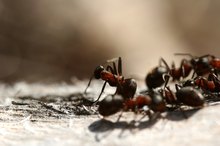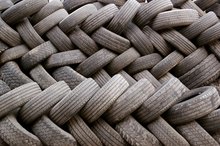Dangers of Talstar
Talstar is a chemical used in the lawn care industry as an insecticide. Only commercial lawn care workers with government permission can have access to the chemical. It is composed of the active ingredient bifenthrin, which is classified as a restricted-use product. Despite the regulation on use, Talstar is still widely used.
Air Dangers
As an insecticide, Talstar is lethal, but it does the job too well, killing bees and birds that come in continuous contact with the chemical. Airborne, it is inhaled by humans and animals, causing damage to the body.
Water Dangers
The Harmful Effects of Powdered Mica
Learn More
Talstar is highly toxic to fish. Bifenthrin, the active ingredient in Talstar, is thought to bind with dirt and in doing so, does not dissolve completely. This feature does prevent the chemical from further contaminating the groundwater, but it does put aquatic life at risk. Studies have not been done to measure the effects of Talstar on humans who drink water that contains bifenthrin.
- Talstar is highly toxic to fish.
- Bifenthrin, the active ingredient in Talstar, is thought to bind with dirt and in doing so, does not dissolve completely.
Effects
When in contact with the skin, Talstar is known to cause rashes and numbness. It is also known to cause nosebleeds, shaking and seizures in both humans and animals. It can also speed up the heart beat (a fatal symptom to those with high blood pressure or heart disease). Lab mice have been found to have increased instances of bladder tumors. Bifenthrin is classified as a carcinogen. It has been found to cause a gene mutation that increases cancer risk.
- When in contact with the skin, Talstar is known to cause rashes and numbness.
- It is also known to cause nosebleeds, shaking and seizures in both humans and animals.
Widespread Use
Side Effects of Ant Poison
Learn More
Talstar and other pesticides categorized as pyrethroid are found to be much safer than their counterparts, the organophosphates that were banned years ago. For this reason, many landscapers and lawn care specialists have increased their use of Talstar in residential areas, especially in new subdivisions. This increased use is being investigated for effects on streams and water supplies.
- Talstar and other pesticides categorized as pyrethroid are found to be much safer than their counterparts, the organophosphates that were banned years ago.
- For this reason, many landscapers and lawn care specialists have increased their use of Talstar in residential areas, especially in new subdivisions.
Other Ingredients
Although bifenthrin is the active ingredient in Talstar, it isn’t the only dangerous chemical in the product 1. The propylene glycol in Talstar has been known to cause kidney and liver damage if ingested repeatedly. It is also known to irritate the eyes and skin as well as kill rainbow trout.
Related Articles
References
Writer Bio
Jonita Davis is freelance writer and marketing consultant. Her work has appeared in various print and online publications, including "The LaPorte County Herald Argus" and Work.com. Davis also authored the book, "Michigan City Marinas," which covers the history of the Michigan City Port Authority. Davis holds a bachelor's degree in English from Purdue University.







